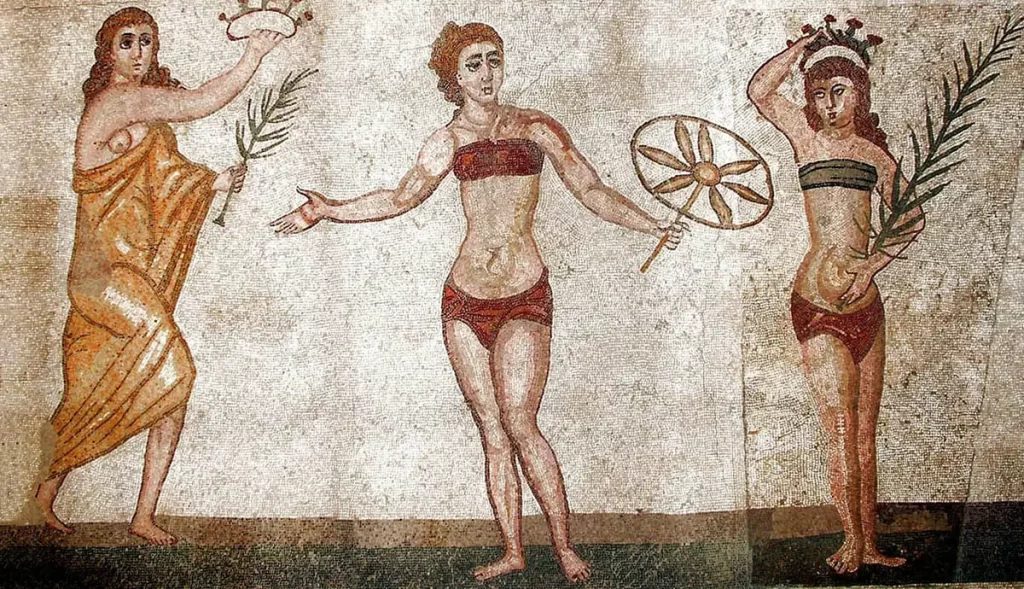
Step back in time to explore the intricate world of Ancient Roman clothing, where fashion was not merely a visual spectacle but a proclamation of social status. Unlike the fast-paced industry of today, styles in Ancient Rome evolved gradually over the centuries, emphasizing the significance of clothing and jewelry in reflecting one’s place in society.
The Artistry of Ancient Roman Clothing

Woven from wool, linen, and silk, Ancient Roman clothing was a symphony of luxurious fabrics. Wool, produced in Italy, took center stage, while linen and silk, often sourced from the eastern parts of the empire, added diversity. The imperial purple, derived from crushed sea snails, stood as the epitome of opulence, with sumptuary laws reserving solid purple togas exclusively for the emperor.
Togas and Beyond: Symbolism in Attire

The iconic Roman toga, a draped cloth of grand proportions, symbolized various statuses and occasions. From the dark woolen toga pulla worn in mourning to the undyed toga with a narrow purple stripe for equestrians, each garment conveyed a unique message. As the empire expanded, so did the grandeur of togas, ultimately becoming a privilege of the wealthy elite.
Everyday Elegance in Roman Life
While the toga reigned supreme for formal occasions, everyday Roman attire was a canvas of tunics, cloaks, and mantles. Tunics, sleeveless and often belted for definition, were the staple, offering practicality for daily life. Women, donned in stollas and pallas, added a touch of grace with decorated necklines, showcasing the fusion of style and modesty.
Beauty Rituals and Adornments

In Ancient Rome, personal adornment extended beyond clothing to intricate hairstyles, makeup, and jewelry. Elaborate hairstyles, popular in the 1st and 2nd centuries CE, showcased the creativity of Roman women. Fragments of daily life revealed tools familiar to us today—combs, tweezers, and even hair-curling tongs, unveiling the timeless pursuit of beauty.
Jewelry as Symbols of Status

Jewelry, inspired by Etruscan finesse, evolved in Roman society. Initially sophisticated techniques like granulation and filigree paved the way, later simplified with embossing and beadwork. Precious metals and stones gained prominence in the 1st century CE, symbolizing the wealth amassed from the empire’s expansion.
The Significance of Ancient Roman Attire
Beyond mere aesthetics, Ancient Roman clothing and adornments were symbolic. Mirrors, abundant across the empire, emphasized the importance of personal appearance. Clothing, whether a toga or a felt hat bestowed upon freed individuals, became a tangible emblem of social standing, personal triumph, and a journey out of slavery.
As we unravel the layers of Ancient Roman elegance, it becomes clear that fashion in this era was not just a visual spectacle; it was a language, a statement, and a testament to the rich tapestry of Roman life.


